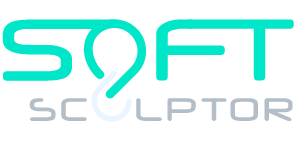Understanding Cloud Native
Cloud Native computing is revolutionizing the IT industry, but what exactly does it mean? Let’s demystify this modern approach to system architecture and discover why it’s becoming the standard for developing robust, scalable applications.
Defining Cloud Native
The term “Cloud Native” is often tossed around in tech circles, but its essence sometimes gets lost in buzzword bingo. Simply put, Cloud Native refers to applications designed from the outset to thrive in the cloud, utilizing its full potential for maximum efficiency, scalability, and innovation.
The Core of Cloud Native
The Linux Foundation describes Cloud Native as an open-source, container-based environment where applications, broken down into microservices, are dynamically orchestrated to optimize resources. This agile, scalable approach allows for rapid deployment, management, and scaling of applications.
Beyond the Technical Jargon
However, technical definitions can sometimes overshadow the broader implications. At its heart, Cloud Native embodies the cloud’s defining characteristics, ensuring that every aspect of the solution leverages the cloud environment from the ground up.
The Cloud Native Litmus Test
How can you tell if a solution is genuinely Cloud Native? Here are some tell-tale signs:
- Rapid Deployment and Scalability: Cloud Native applications can be quickly rolled out and scaled up or down as needed, providing the flexibility essential for experimentation and implementation.
- Elasticity: True Cloud Native solutions can adjust resources in real-time to match demand, ensuring cost-effective performance.
- Operational Simplicity: Automation and standardization are at the core of Cloud Native solutions, simplifying deployment and management across diverse environments.
- Seamless Integration: They effortlessly integrate with various cloud tools for comprehensive monitoring and prompt issue resolution.
- Resilience: Robustness and high availability are staples of Cloud Native applications, with the capability to fine-tune resiliency according to specific use case requirements.
Cloud Native Best Practices
When transitioning to a Cloud Native framework, it’s essential to evaluate solutions against specific criteria:
- Resiliency: How is it achieved, and can you scale without affecting user experience?
- Flexibility: Is the solution capable of rapid reconfiguration to adapt to changing needs?
- Architecture: Does the underlying structure truly support a Cloud Native approach?
Making the Right Choices
In the Cloud Native landscape, narrow or broad designs can be pitfalls. Over-specialized solutions may struggle to adapt to new demands, while overly complex systems can lead to cumbersome and fragile architectures.
The Bottom Line
As we steer into the Cloud Native era, it’s crucial not to equate a cloud provider’s offerings with the most native solution. Each application warrants a thorough examination to align with both immediate needs and broader organizational goals.
This blog post aims to clarify what Cloud Native computing entails and why it’s crucial for the future of software development. It also provides practical insights on identifying and implementing Cloud Native solutions for those looking to leverage the cloud’s transformative power.



